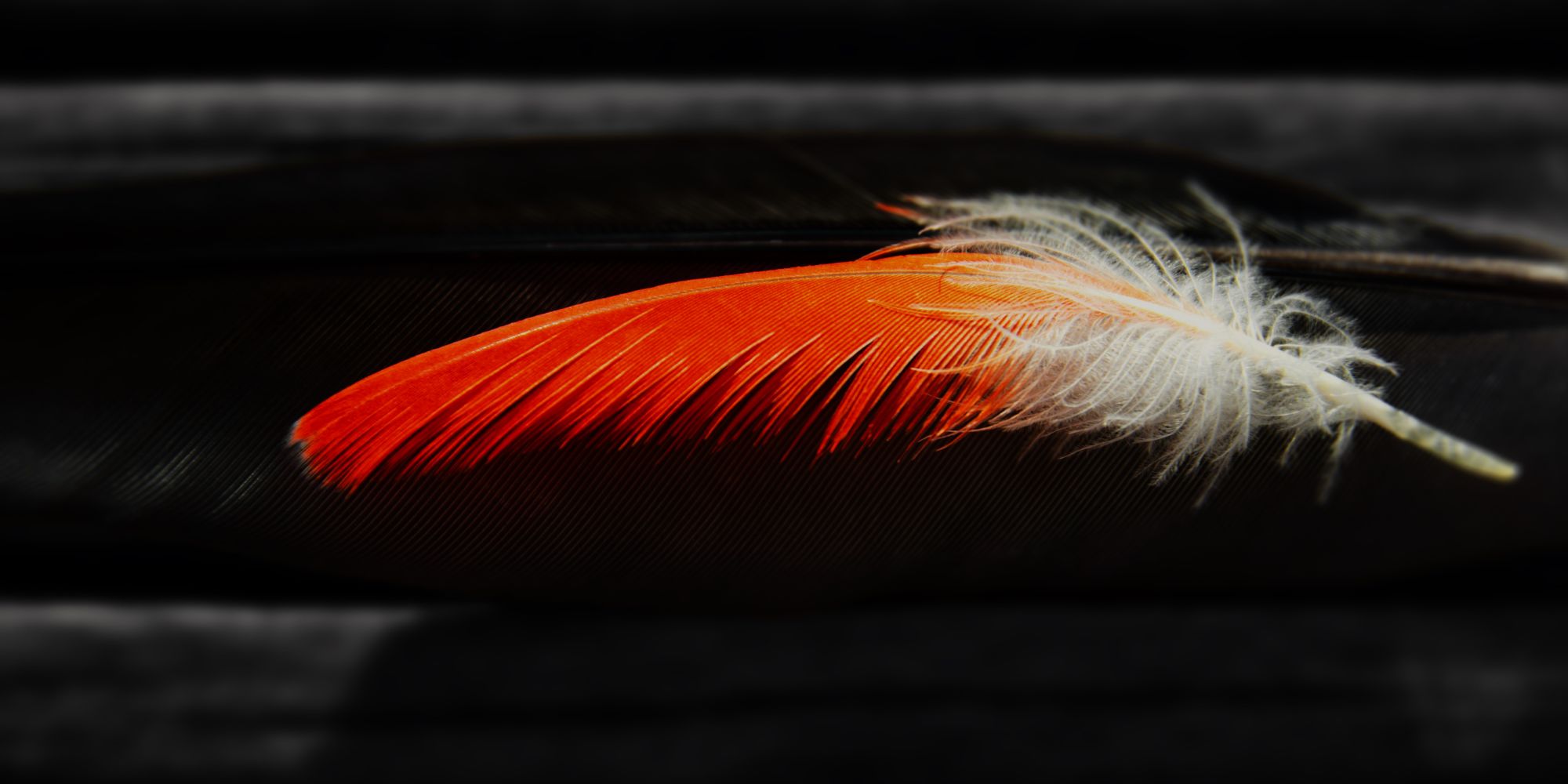
Running Commentary 7/21/2025
Hello,
I haven’t seen many birds lately but I did get to see some new species of colorful flying creatures just the same: an Imperial moth and a mourning-cloak butterfly. Imperial moths are leafy-looking creatures who live a relatively short life as adults; the one I found was missing limbs and a chunk of wing and seemed mostly dead. The butterfly was much more alive. I didn’t get excellent pictures of it but I will say it was quite beautiful in person.
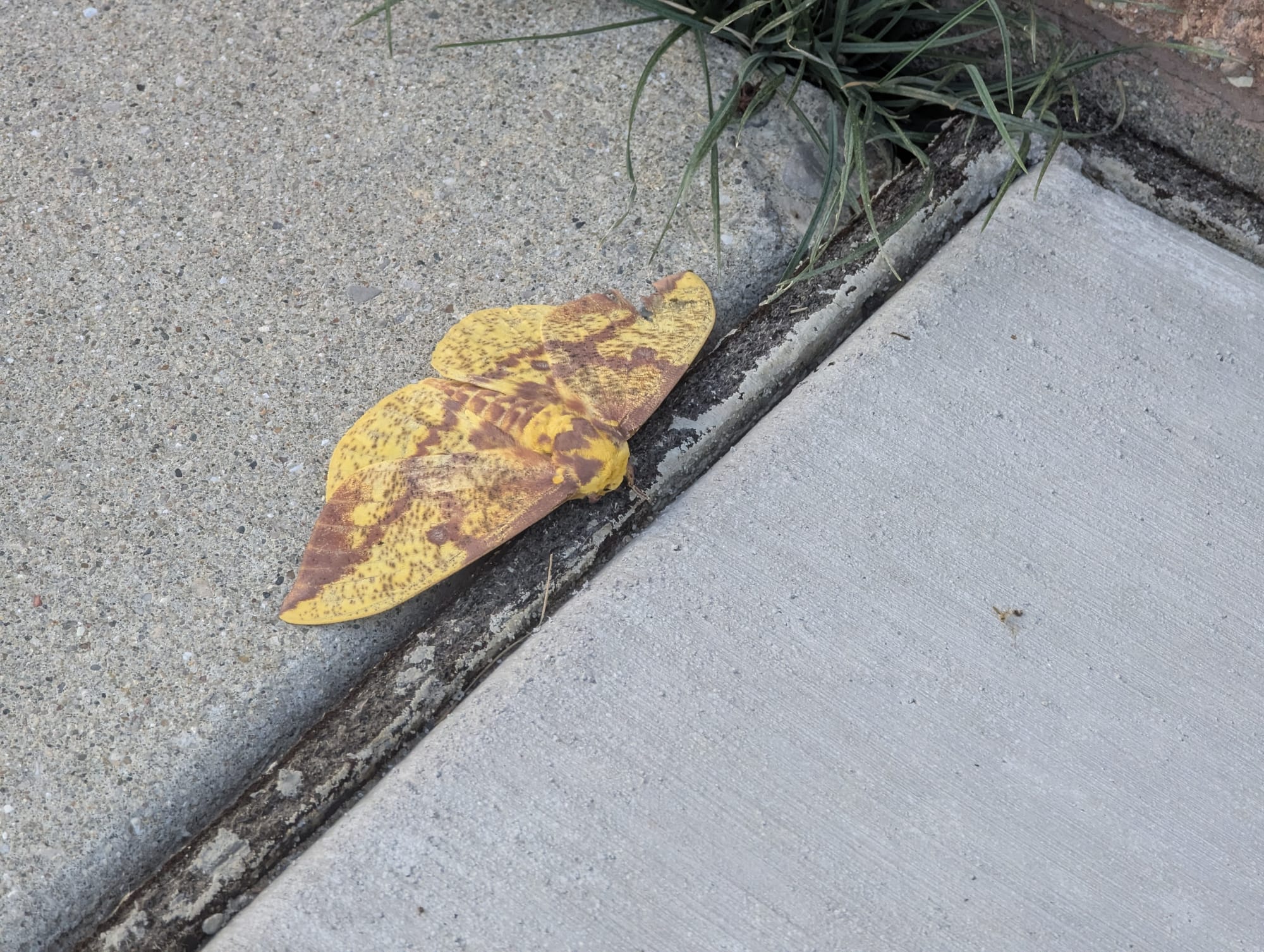
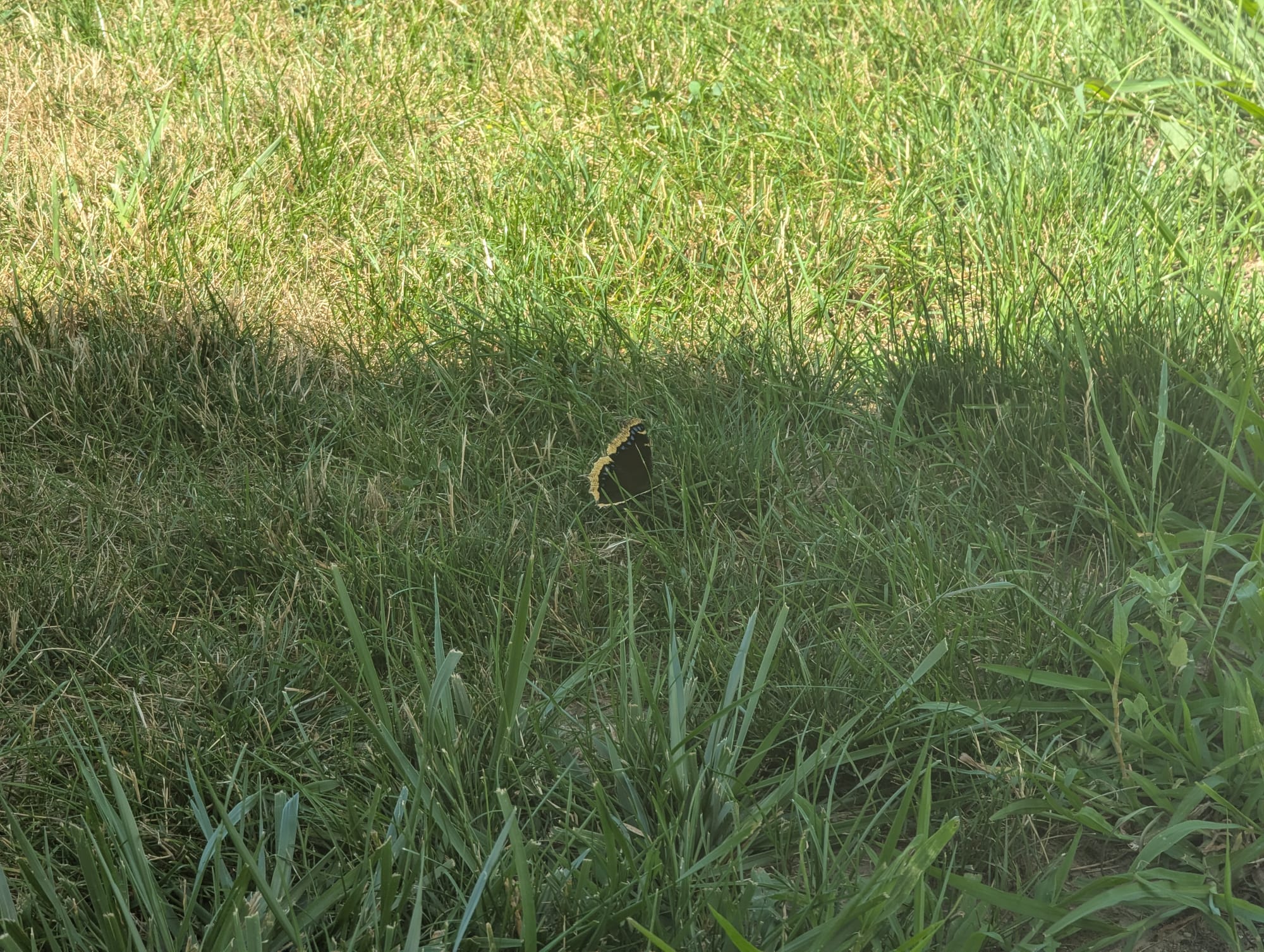
Imperial Moth (left) and Mourning-cloak Butterfly (right)
I’m not nearly the lepidopterist that I am a birder (yet—maybe when I run out of birds…) but it was still something to add two new species to my as-yet-unkept life list for such creatures.
Anyway...
Playing...
Warframe
Oraxia
I have obtained and leveled Oraxia, as well as her signature weapons, the Scyotid darts and the Spinnerex whip. I’ll talk about the weapons first: they’re both pretty good, in a “this is unique and effective” way moreso than in a “throw away your arsenal because these do the big numbers” kind of way. Both deal pure toxin damage. The Scyotid is status-heavy with low crit chance (but quite high crit damage) and has an alt-fire that will group up enemies, albeit in a somewhat limited radius compared to grouping abilities like Styanax and Vauban have. The Spinnerex has similar status and crit characteristics and can tag struck enemies to explode and distribute toxin procs upon death. It’s a pretty effective melee weapon but I’m confused a bit why it’s associated with a ‘frame that generally isn’t using melee weapons. Which brings me to Oraxia herself:
- Oraxia’s passive is that you become invisible for 8 seconds while wall-latching, which I find to be more in line with Ash’s or Wisp’s invisibility than with Loki’s or Ivara’s: a means to escape immediate danger rather than a state to stay in permanently during a mission.
- Her 1 is a leaping attack, single-target and not really a one-shot attack, but still useful because enemies killed with it have an increased chance to drop health or energy orbs. DE has been kind enough to mark nearby enemies with a floating symbol if they are at insufficient health to survive this attack. This isn’t really a major offensive power so much as it’s a means of healing/restoring energy while in combat and especially while her 4 is activated.
- Her 2 will ensnare enemies hit by her cast web, which will spread over the floor and ensnare other enemies. Ensnared enemies are debuffed with increased damage susceptibility.
- Her 3 attacks small crowds of enemies with a venom attack. Affected enemies will spawn little spiders when they die; these spiders will attack remaining enemies, and they deal respectable damage, though they last for less than a minute even with duration mods applied.
- Her 4 sees Oraxia change form into a great striding spider. In this form, she receives bonus toxin damage to her primary and secondary weapons, though she cannot use her melee weapon; instead melee attacks will trigger her first ability leaping attack. Also, while in her spider form rolling is replaced with launching a strand of web that pulls Oraxia into a permanent wall/ceiling latch from which she can fire on enemies. This will trigger her passive invisibility, but only for 8 seconds, and she will only remain latched until she’s run out of energy (this ability has a constant 5/sec energy drain). As a traversal power I find this a bit inconsistent, not working well in cramped or very wide open areas but working pretty well to get around quickly in mid-density areas. The ability to cling to high-up surfaces is probably most useful against Infested, since you become out-of-reach of most melee attacks.
I think Oraxia really does feel like playing as a spider. Her powerset is intuitive and complements ranged weapons well without totally depending on them for damage. Like her signature weapons, she’s not meta-breakingly amazing but she’s capable and distinctive, standing out in an increasingly crowded roster of ‘frames.
TennoCon 2025
As usual, TennoCon featured a lot of presentations, but there are three announcements I’m interested in giving my thoughts on:
- Warframe’s Android beta is coming in the Fall; I’m registered for this, and if I get in I’ll let you know how it performs as much as any NDAs will allow me to.
- The next new ‘frame will have a devil theme and will come as part of an update involving the protoframes for Harrow and Wisp, who appear to be clergy. Voiceover in the trailer questioned whether the Orokin could ever be redeemed, which I found interestingly dovetailed with…
- what we saw of the next story quest, “The Old Peace”, coming, I presume, around Christmas of this year. Here, we saw the Tenno aided by Loid and the Lotus able to transfer into a Excalibur Prime warframe in the Tau system, where the Orokin Empire rules with the aid of friendly, uncorrupted Grineer and Sentient soldiers. You can go ahead and watch the demo:
It’s unclear to me whether the Tenno has transferred to the past, before the Old War (possibly causing the Old War) or to some alternate timeline resultant from Albrecht and the Drifter’s doings in 1999, but either way I’m intrigued. The faction breakdown in Tau especially piques my interest: We have Grineer and Sentients fighting for the Orokin, but we only see Grineer and Sentients (and one Cephalon) on the side of the Orokin. The Dax are fighting against them, even though they ought to be literally incapable of taking up arms against their masters. Are there any true Orokin in Tau? If so, did they turn against the rulers back on Lua?
I can’t imagine we’ll all be able to keep the Excalibur Prime; legally I don’t think DE can give this out in a quest, and besides, with Umbra we don’t really need one, but I expect we’ll have him for the quest and maybe will even be able to rank him up for mastery. In any case, I’m very much looking forward to everything that was shown at TennoCon this year. Watch this space when the updates release.
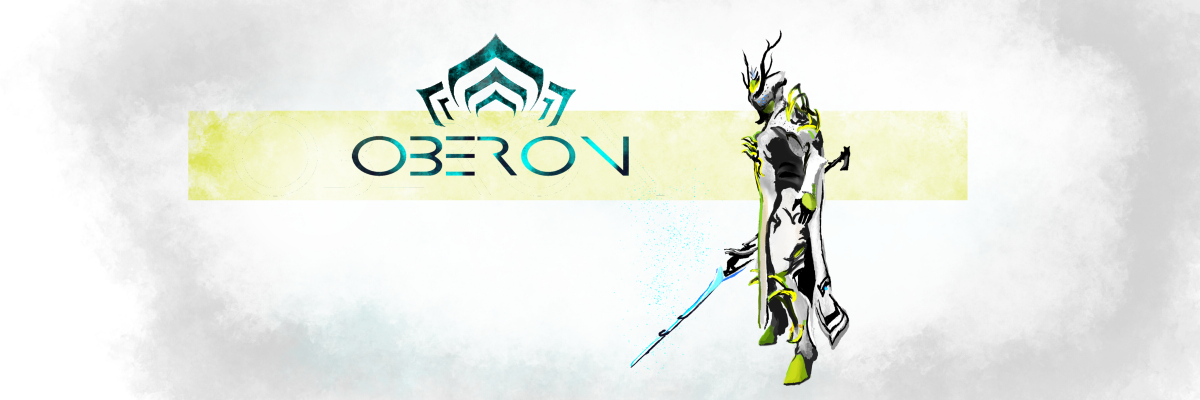
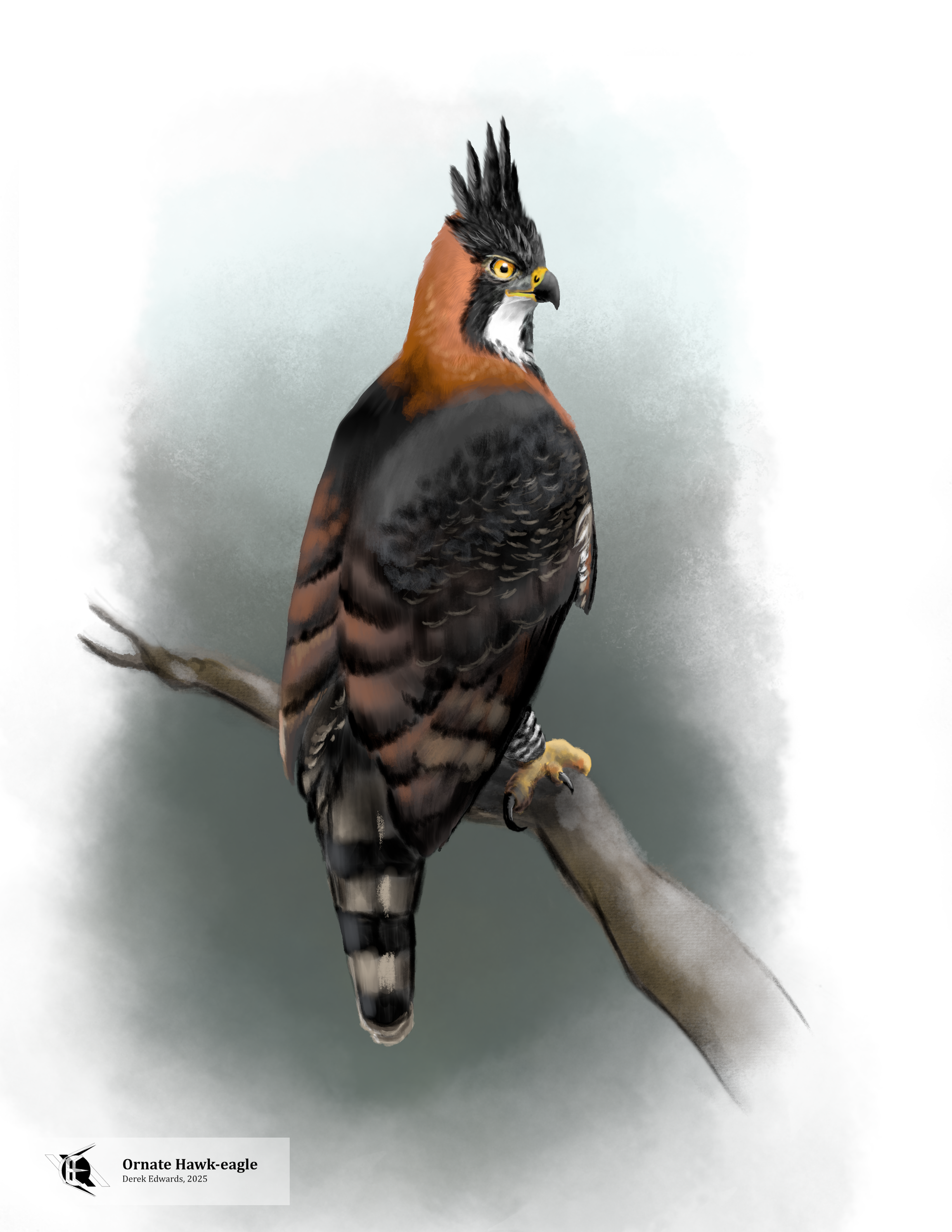
Bird of the Week
This week I'd like to talk about something that I could have talked about several times but never have taken the opportunity to: crests. Lots of birds have crests, birds in the tropics and in the Western Hemisphere especially. Scientists have noted that birds found closer to the equator are more colorful than those found further out toward the poles;1 if we consider crestedness to be just another form of visual flashiness like colorfulness we shouldn’t be surprised to see so many crests in the tropics. Why birds west of the Atlantic tend more towards crestedness than those east of it is more of a mystery.2 I might point out that, as is the case with the tropics vs. more temperate regions, there are simply more birds in the Americas than in Europe, so birds need more ways to stand out, but again this is all an open area of study. In any case, there are a lot of crested birds in the American tropics, and not just songbirds, but deadly raptors too, such as the Ornate Hawk-eagle.
Crests exist, insofar as they exist in a given species of bird, to be seen. Whether they signal emotion, differentiate similar species, or simply indicate good health, crests are meant to be shown off to other birds. Hawk-eagles don’t show their crests all of the time; sometimes their crown of black feathers lie slicked back, other times it is held up as I’ve drawn it here. I’m not confident in the habits of this particular species but I know from experience with other crested birds that mobile crests are often erected when a bird is in some way stirred up, and lie flat when the bird is at peace. I’ve seen birds raise their crests when alarmed, when peering intently at something, or when singing. Even non-crested birds will often fluff up their heads in similar situations; it seems crests are a means of accentuating this common avian behavior.
The ornate hawk-eagle is indeed on of the flashier-looking raptors, with its afore-mentioned crested head, its rich chestnut neck ,and its jailhouse-striped black-and-white underparts, which I cleverly avoided having to draw by depicting this bird from the back, showing only an artfully-extended leg. The term “hawk-eagle” raises a question: is it a hawk or an eagle? Or is it perhaps some third thing, the way the cuckooshrikes are neither cuckoos nor shrikes? For that matter, what’s the difference between hawks and eagles? Both sorts of birds are part of the same family, with eagles making up a few sub-families on their own but also sharing some others with hawks and kites. The proper taxonomy of the family Accipitridae is complicated, with genetic studies reconfiguring its classifications coming as late as last year.3 The general rule has always been that eagles are bigger than hawks, but the hawk-eagles are kind of an in-between size, smaller than most eagles and a bit bigger than big hawks. They are, in fact, eagles, belonging to the “booted eagle” subfamily Aquilinae. The hawk part of their name indicates both their smallish size and their hunting habits — they pursue prey through forests much as the true hawks do, rather than soaring out in the sky like typical eagles and buteo hawks will.
To science, the ornate hawk-eagle is Spizaetus ornatus. The species name simply is the Latin root of English “ornate”, deriving from a word meaning “to adorn”; the genus name does not mean “hawk-eagle”, but rather “finch-eagle” in Greek.4 I’m not sure why — the ornate hawk-eagle is not a finch-eater; it’s actually quite an ambitious hunter, eating a wide range of birds and mammals, some of them twice as large as it is.5
- Baggaley, Kate. “Songbirds Near the Equator Really Are Hotter, Color-wise.” Popular Science, April 4, 2022. https://www.popsci.com/animals/tropical-birds-more-colorful/.
- Kaufman, Kenn. “Ask Kenn Kaufman: Which Birds Are Most Like Their Dinosaur Ancestors?” Audubon, April 22, 2025. https://www.audubon.org/magazine/ask-kenn-kaufman-which-birds-are-most-their-dinosaur-ancestors.
- Catanach, Therese A, Matthew R Halley, and Stacy Pirro. “Enigmas No Longer: Using Ultraconserved Elements to Place Several Unusual Hawk Taxa and Address the Non-monophyly of the Genus Accipiter (Accipitriformes: Accipitridae).” Biological Journal of the Linnean Society, March 22, 2024. https://doi.org/10.1093/biolinnean/blae028.
- Jobling
- Melesio, Lucina. “Ornate Hawk-Eagle: The Elegant Eagle.” BirdNote. September 16, 2024. https://www.birdnote.org/podcasts/birdnote-daily/ornate-hawk-eagle-elegant-eagle.
Curation Links
Mark Twain, the Californian | Ben Tarnoff, Lapham's Quarterly
Excerpted from The Bohemians: Mark Twain and the San Francisco Writers Who Reinvented American Literature by Ben Tarnoff. The story of Mark Twain's time in San Francisco, working as a newspaper writer and later writing for a literary magazine during the latter years of the Civil War. Portrait of a Worm on Fire | Claire L. Evans, WIRED
“One of the simplest, most over-studied organisms in the world is the C. elegans nematode. For 13 years, a project called OpenWorm has tried—and utterly failed—to simulate it.”
The End of Roadside Attractions | Jane Stern, The Paris Review
“For those of you too young to know what a roadside attraction is, let me explain. Unlike big ‘fun’ corporate endeavors like Disney World or Busch Gardens, a true roadside attraction was a brainchild of an individual with a vision. These people were usually oddball folks who lived in rural areas. Ignited by their own passions or obsessions, they invited the public in to see what they had devoted their life’s work to.”
The Cry of the Pack | Elizabeth Garver Jordan, Electric Lit
[FICTION] “I always went into an editor’s room to take an assignment with perfect confidence, and I usually came out of it in black despair. The confidence was caused by the memory that I had got my past stories; the despair was caused by the conviction that I could not possibly get the present one. Each assignment Mr. Hurd had given me during the week seemed not only harder than the last, but less worthy the dignity of a general’s daughter. Besides, a new and terrible thing was happening to me. I was becoming afraid— not of work, but of men.”
See the full archive of curations on Notion


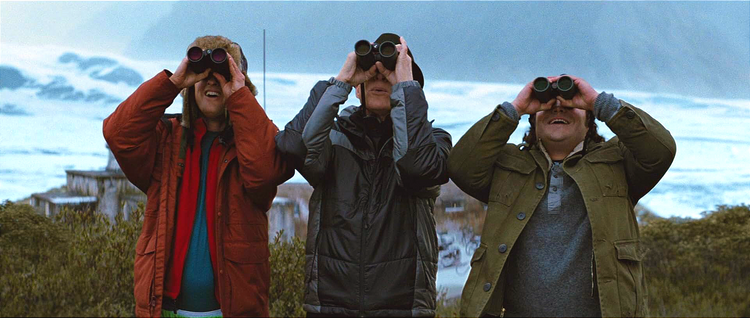



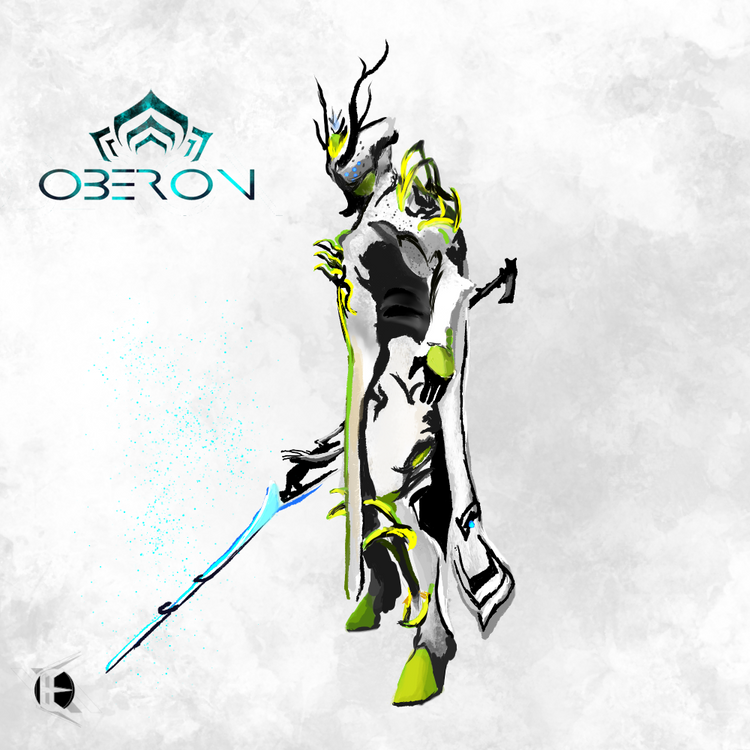
Member Commentary